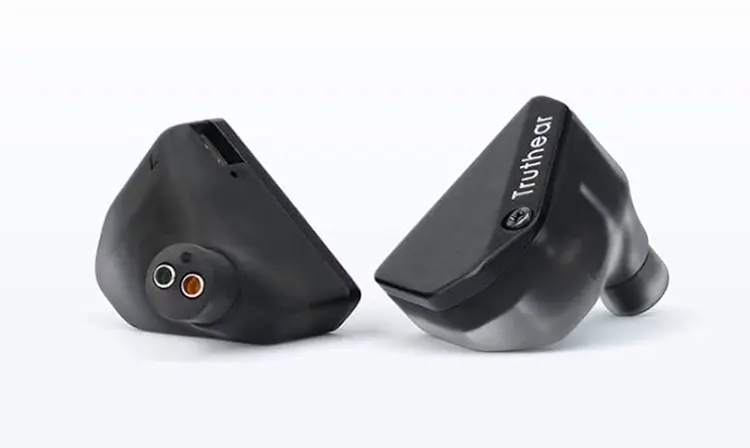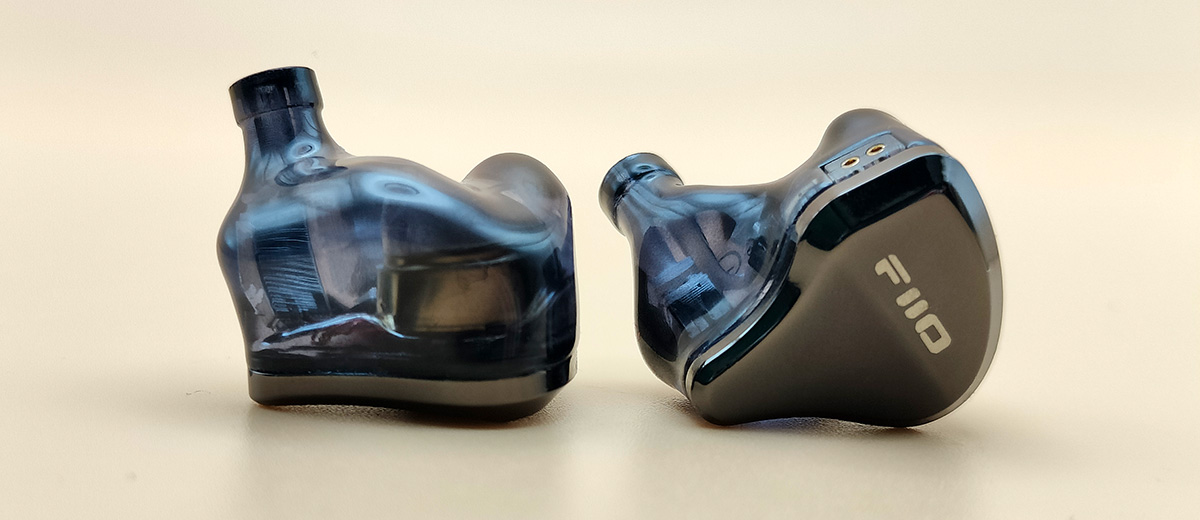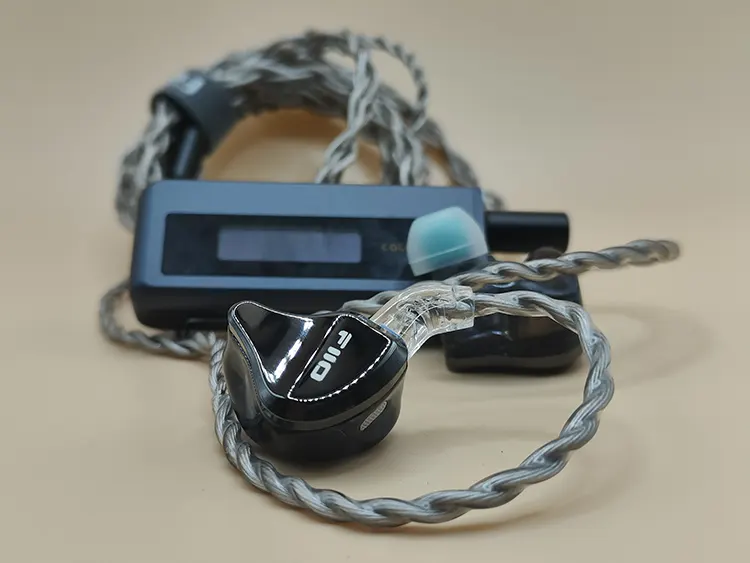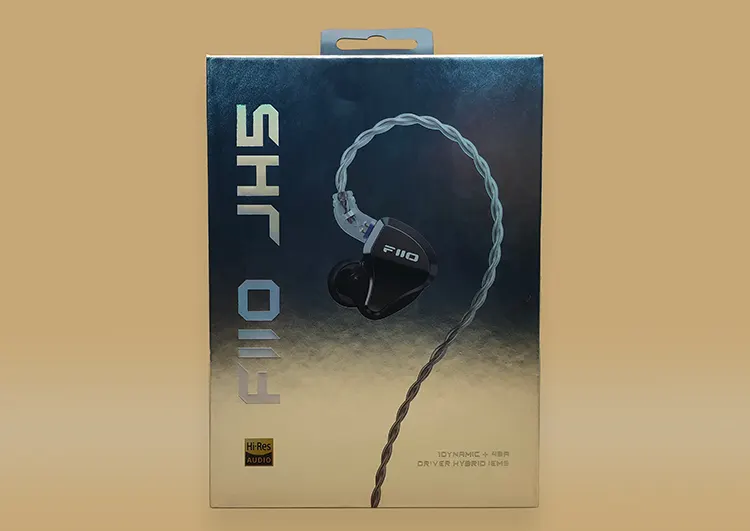Synergy
The FiiO JH5’s impedance rating of 13Ω and a sensitivity of 111db SPL/mW makes it easy to run on most devices. You wouldn’t need to worry about needing a high-end source or anything, rather any device 3.5mm will power it.
Any dongle, DAC, or device will fit well with the JH5. It’s best to not worry about purchasing additional gear for it with its impedance and sensitivity.
The JH5 doesn’t have any particular preference for pairings. A CX31993 dongle or even a dedicated DAP will give it the same performance.
It’s best to know that dedicated DAPs will normally give you louder volumes at lower levels due to their implementation. This must not be confused with better performance because if you increase the volume level with a dongle, it will sound the same.
I tested the JCally CX31993 dongle first. As expected, it was able to run smoothly with no issues. I followed it up with both the Colorfly CDA-M1P and CDA-M2. Both of these performed the same with the FiiO JH5 and similarly to the JCally CX31993 as well.
Lastly, I tested it with a phone that has a headphone jack. The performance is the same with no changes to the sound quality.

Select Comparisons
Truthear Hexa
Technical
The Truthear Hexa comes with a single dynamic and triple BA driver setup. It has an impedance of 20.5Ω and a sensitivity of 120 dB/Vrms.
The 20.5Ω impedance rating of the Truthear Hexa will make it a bit harder to drive than the FiiO JH5 but not too much. Both of these can still be easily driven through modest sources.
The 120 dB/Vrms rating makes the Truthear Hexa a little bit more sensitive than the JH5. Despite that, either of these will work just fine on anything.
Design
The Truthear Hexa, like the FiiO JH5 I have, has a black unibody design. Both shell and faceplate are only available in black.
Just like the JH5 the Hexa design is boring. They have similar design philosophies as well like the text on the shell and a semi-opaque shell.
Unlike the JH5, the Truthear Hexa has the standard IEM shell. It doesn’t conform to the ear shape with extra grooves and curves which makes it less comfortable. There’s also a screw on the shell of the Truthear Hexa which FiiO JH5 doesn’t have.
Performance
In the bass, the FiiO JH5 just completely defeats the Truthear Hexa. Going back to the Truthear Hexa after using the JH5 will make you realize how limp and weak the Hexa’s bass is.
There is no sense of rumble, slam, or punch with the Truthear Hexa after you’ve tried the JH5. You want more of that head-banging sensation when comparing these two.
For the mids, the Truthear Hexa gives me that fulfilling forward and consistent vocals. There are no problems with the forwardness and dynamics like the JH5 has.
But the vocals on the JH5 sound thicker and heavier. On the Truthear Hexa, it sounds average or even thin but clean.
In the treble, the detail retrieval is simply night and day. You will hear a lot more details and sparkle with the Truthear Hexa. It will seem like a magical spell was cast on you when you experience the detail retrieval of the Truthear Hexa. The JH5 simply cannot match up to it.
With staging and dynamics, the Truthear Hexa has a wider soundstage. You definitely will hear a considerable difference between the two in this aspect.
It’s the same result with dynamics as well. The Truthear Hexa does better in managing the equalization of the volume throughout.
For sibilance, the JH5 has zero of it while the Truthear Hexa still has those piercing highs. Laidback is the forte of the JH5 and clinical rings true for the Truthear Hexa.
Simgot EA500
Technical
The Simgot EA500 is a single dynamic driver IEM. It uses a 10mm DLC composite diaphragm that has a dual-magnetic circuit and dual-cavity structure. This is a 16Ω impedance and a 123 dB/Vrms sensitivity-rated IEM. This means any device or source will be able to run it without issues.
It also has detachable nozzles. The red nozzle smoothens out the upper treble while the black filter is the one advertised as described as the ‘musical’ tuning.
Design
The design of the Simgot EA500 is clean, shiny, and polished. Its shell looks like a mirror with how reflective the surface is while resembling glass. It has a metal unibody processed through high-density alloy metal casting with CNC fine engraving.
There is one vent near its nozzle and another vent on the upper part of its shell so pressure building up shouldn’t be a concern with it. It’s one of the pretty sets out there in the market. The design fits very well for IEM collectors who like eye-catching gear.
Performance
This is a single dynamic driver IEM versus a multi-driver IEM. The FiiO JH5 will be tested on its stock configuration while the Simgot EA500 will be tested on its red filter.
Starting with the bass, no competition is needed to hear and feel who wins this. The JH5 wins it easily. Both the bass quality and quantity on the JH5 crushes the Simgot EA500. Going back to the Simgot EA500 after using the JH5 is a genuinely sad experience.
I lost that feeling of great rumbling and slamming in my music with the Simgot EA500. All I could feel with it was the vocals and instruments only.
With the mids, the vocals on the Simgot EA500 are more forward, but it’s thinner. Meanwhile, the JH5 has bad dynamics on the vocals but it sounds thicker and heavier. Both of these are good depending on your tastes. I’d take the Simgot EA500’s vocals since I prefer forward vocals.
With the treble, the Simgot EA500 outshines the JH5 easily. Its detail retrieval simply wins out that the JH5 can averagely do only.
But the tradeoff for the Simgot EA500’s great detail retrieval is a great amount of sibilance. Along with that is that the separation isn’t done well on it, unlike the JH5.
With soundstage and dynamic, the Simgot EA500 reaches farther in both width and depth. It has a surprisingly wide soundstage that the JH5 doesn’t offer.
Our Verdict
The JH5 is another great performing and very affordable multi-driver universal IEM by FiiO and Jade Audio.
The price-to-performance ratio is satisfying with this one, particularly from the nicely balanced bass and the excellent levels of comfort and isolation.
My only critique is I find the timbre a little bit off for male vocals and the treble resolution is just average. That is nitpicking a bit because, in all honesty, the FiiO JH5 is a fairly low-risk buy in my book.
It does everything well enough that it’s hard to complain about its shortcomings. Everything is well-balanced enough to call it FiiO and Jade Audio’s ‘Jack Of All Trades’ IEM.
FiiO JH5 Technical Specifications
- Driver Type: One (1x) carbon-based dynamic driver, four (4x) customized balanced armatures
- Plug: 3.5mm single-ended standard 0.78mm-2pin
- Frequency Response: 20Hz – 40kHz
- Impedance: 13Ω@1kHz
- Sensitivity: 111db SPL/mW




